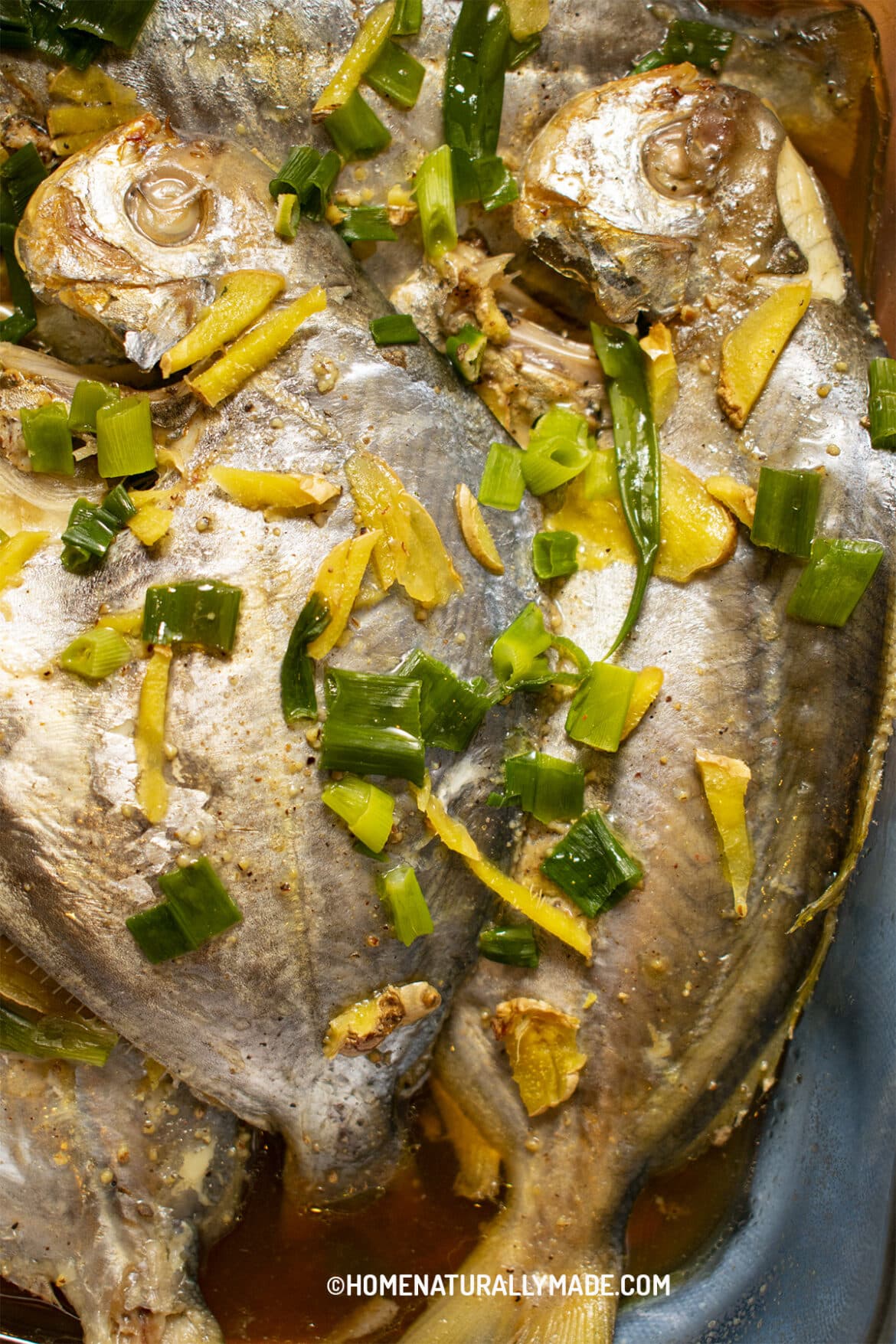Table of Contents
Huai Yang Style Steamed Fish is so naturally delicious. It features fish seasoned with salt and black pepper and then steamed together with green onion, ginger, a little light soy sauce, and sake. We then sprinkle a dash of olive oil over the fish upon steaming completion. That’s it. Perhaps the easiest and healthiest ways of enjoying a clean eating style yummy dish.
This recipe works great for fish that has a flaky, tender meat, such as belt fish, butterfish, porgy, flounder, butterfish, mullet, bass. As a matter of fact, Steamed Belt Fish {Qing Zheng Dai Yu 清蒸带鱼} is a classic Huai Yang dish. Since butterfish is so common in the States, I used the same recipe for steaming butterfish, which turns out perfect!
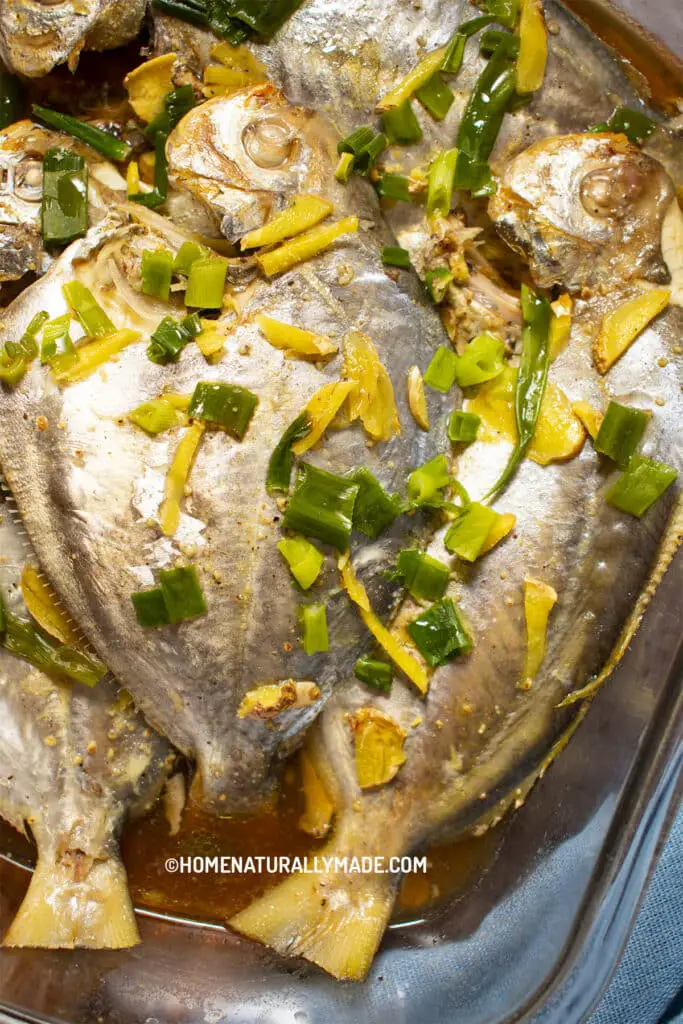
What is Huai Yang Style Cuisine?
If you are new to Huai Yang style food. They are one of the eight major cuisines in China, referring to the food native to China’s Yangtze River Delta area, known as “Jiang Nan” {江南} throughout history. Cities such as Shanghai {上海}, Suzhou {苏州}, Hangzhou {杭州}, Yangzhou {扬州}, Nanjing {南京}, Wuxi {无锡} in this area represent Huai Yang cuisine collectively, though each city usually has some specialty food to offer.
I was born and grew up in Suzhou, and went to Shanghai for college. I left Jiang Nan for a job upon graduation from college. After that, I lived in different cities in China and ultimately settled down in Chicago. I am so fortunate to have enjoyed so many varieties of yummy food throughout the years. Nevertheless, Huai Yang Style food always has a special place in my heart. To me, it means home, comfort, and so much more.
If you are searching for authentic Huai Yang style recipes, you absolutely came to the right place. I am so glad you are here. Read more about Huai Yang Cuisine here.
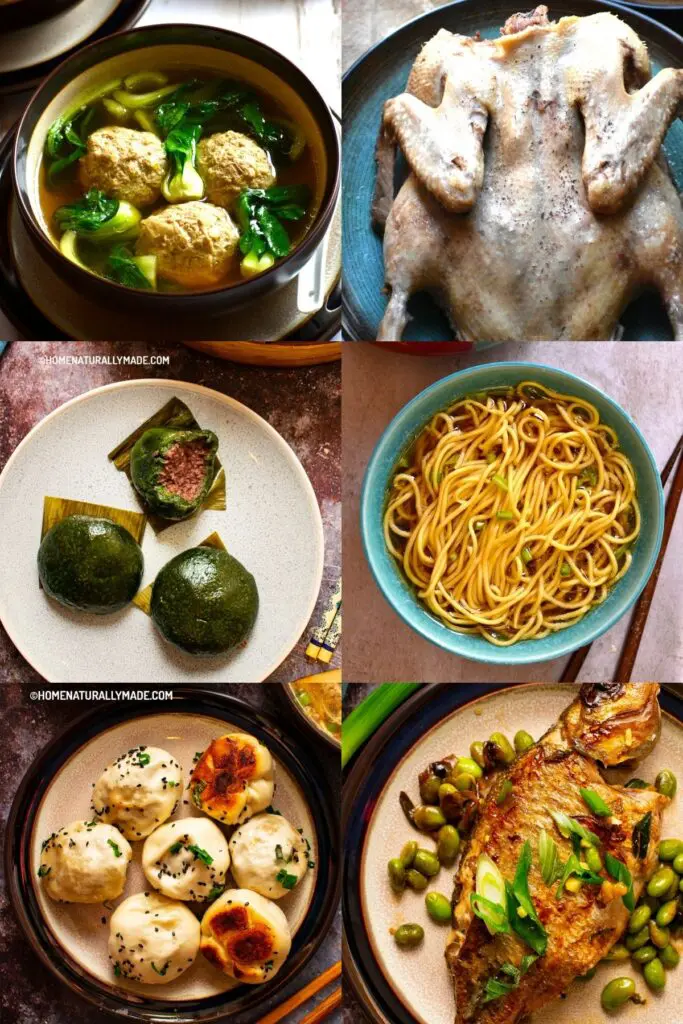
What are the differences between Cantonese Steamed Fish vs. Huai Yang Steamed Fish?
No doubt Cantonese Steamed Fish is more popular in the west because of historical reasons. Speaking of the difference between Cantonese vs. Huai Yang Style steamed fish, I’d like to highlight three things:
First, for Cantonese steamed fish, people usually steam the fish first and then flavor it later. Typically, we only apply a bit of salt and black pepper to the fish for steaming. The sauce is then prepared separately and poured over the fish once the steaming is done.
Second, Cantonese steamed fish sauce typically uses more soy sauce, which makes the sauce look darker, and more cooking oil.
Third, Huai Yang style steamed fish does not use sugar. Cantonese style steamed fish, however, usually add a bit of sugar to sweeten the soy sauce.
Last but not least, cilantro plays an essential role in flavoring Cantonese Steamed Fish. Whereas Huai Yang Style steamed fish uses green onion only.
Like butterfish? Remember to check out Braised Butterfish Asian Fusion too.
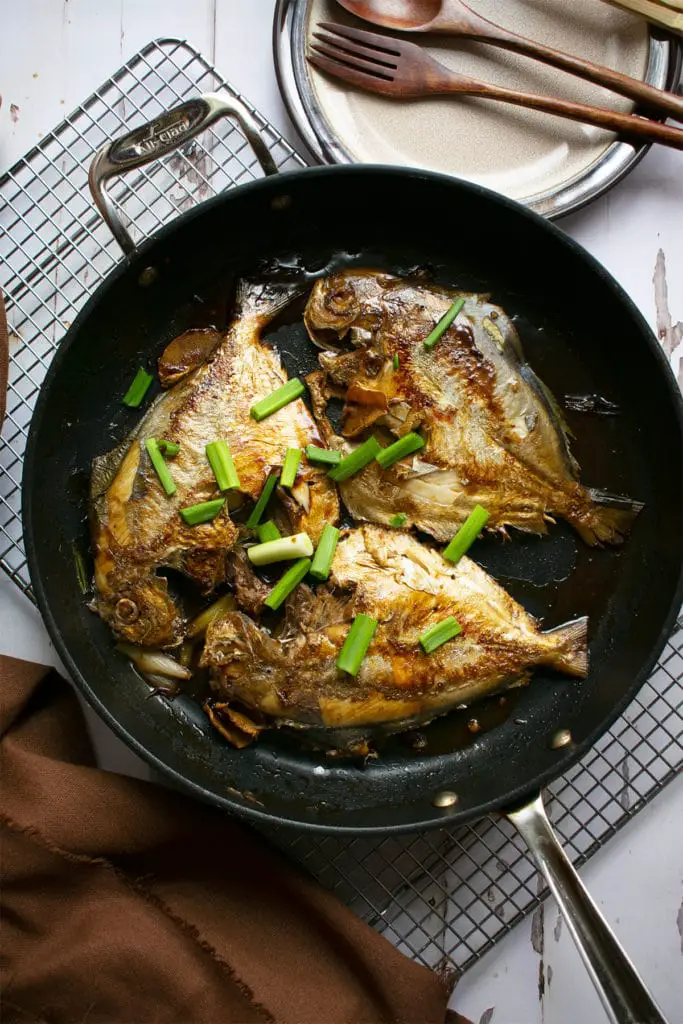
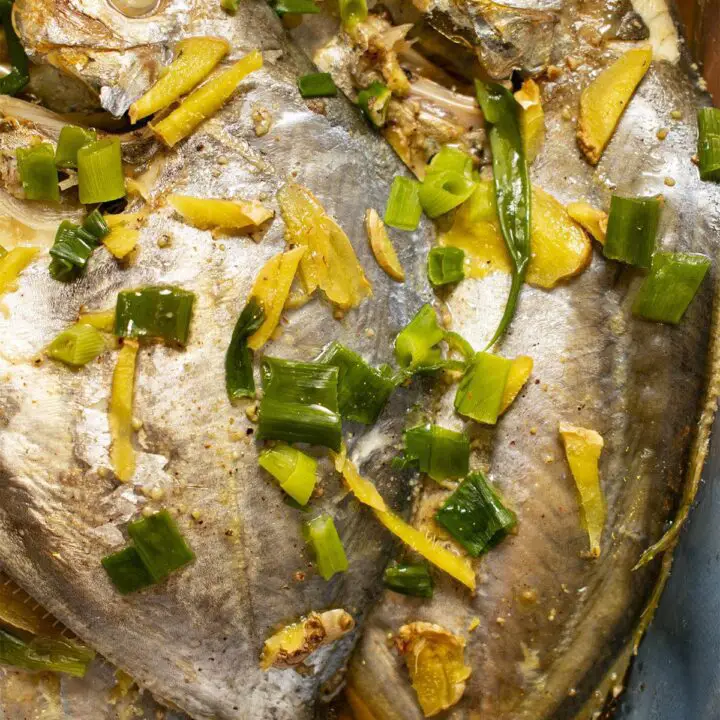
Huai Yang Style Steamed Fish Recipe
Steamed Butterfish Huai Yang Style features butterfish seasoned with salt and black pepper and then steamed together with green onion, ginger, a little light soy sauce, and sake. We then sprinkle a dash of olive oil over the fish upon steaming completion. That’s it. Perhaps the easiest and healthiest ways of enjoying a clean eating style yummy dish.
Ingredients
- 1 lb whole fish, gutted and cleaned, or fish fillet
- 1/4 tsp salt, Himalayan pink salt, or sea salt
- 1/4 tsp black pepper, freshly ground preferred
- 1 tbsp sake
- 1 tbsp light soy sauce
- a small piece of ginger, about 8 g, thin julienne cut
- a stalk of green onion, chopped
- 2 tsp olive oil, organic virgin preferred
- 5 cups of water, for steaming
Instructions
- Gather ingredients and prepare your steaming set. See notes. Mix sake and light soy sauce in a small dish and blend well together.
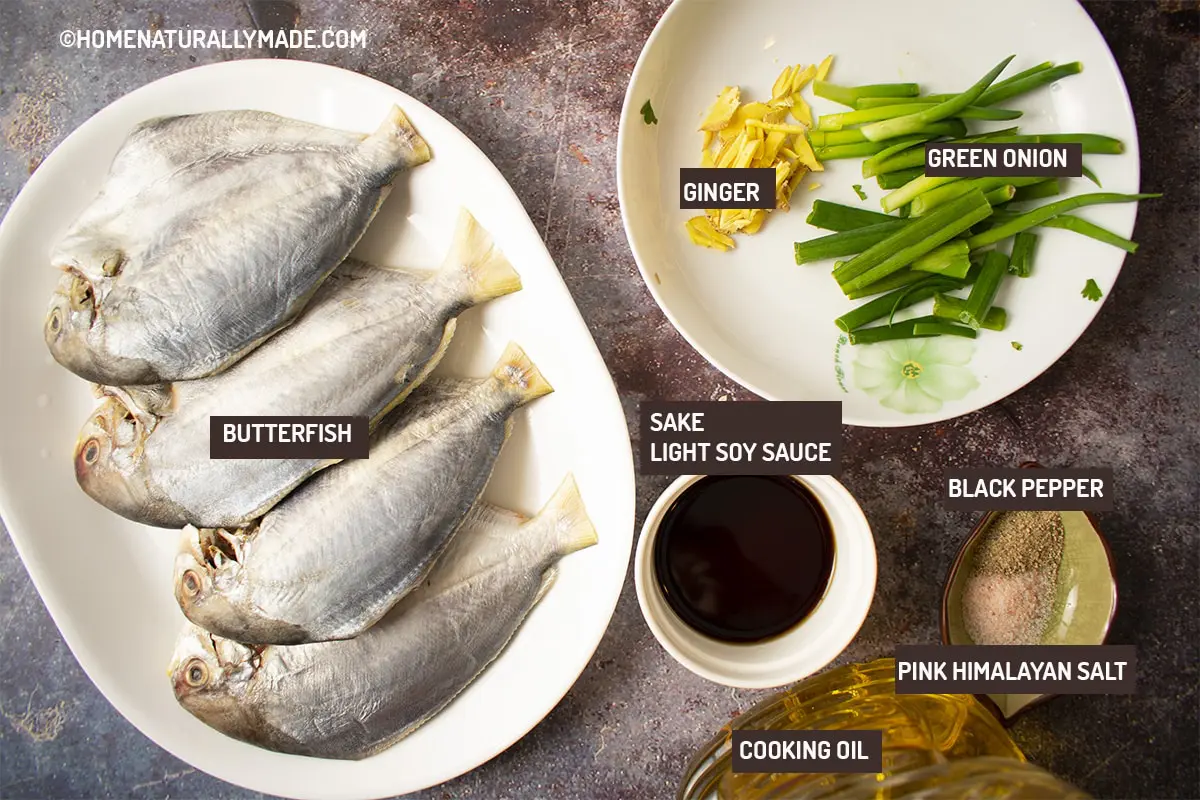
- Add 5 cups of water to the Wok, turn the heat to medium-high, cover the Wok with a lid and bring it to a boil.
- While waiting for the water to reach a boil, do the prep work. Mix salt and black pepper in a small dish and mix well.
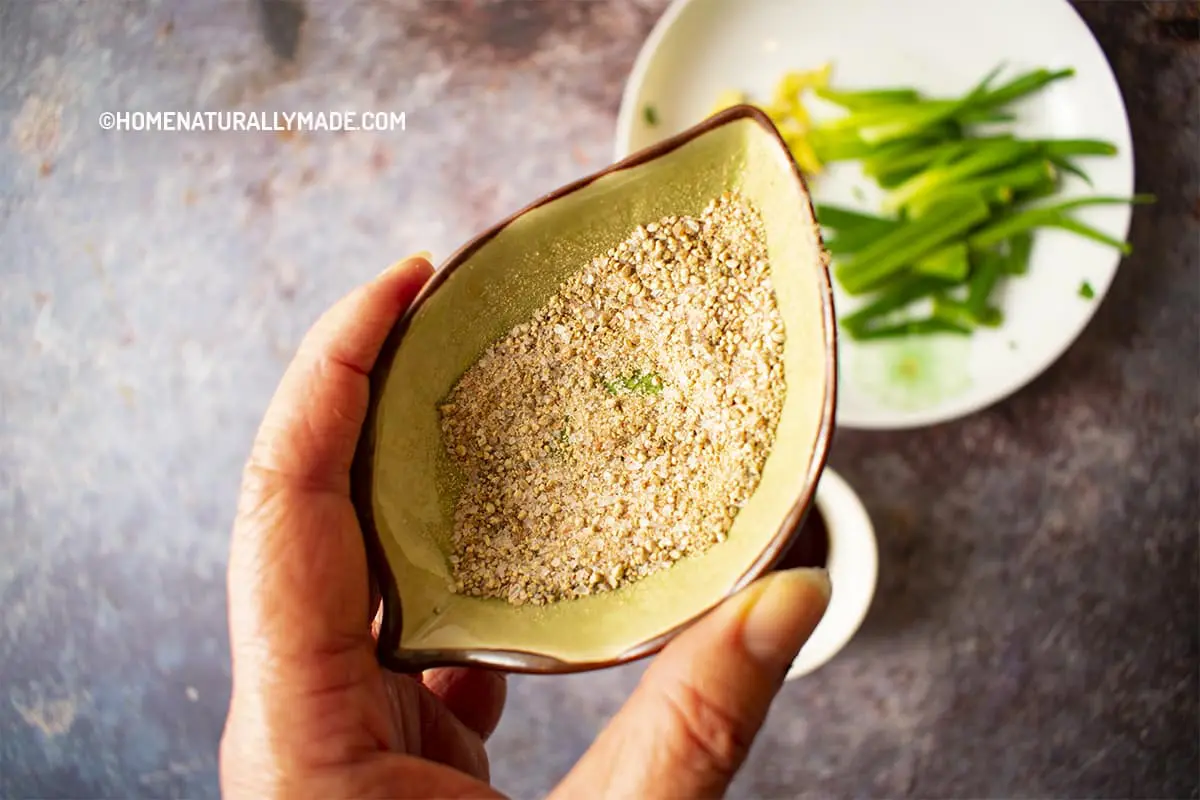
- Place the butterfish in the steaming dish. Pour the sake and light soy sauce mixture evenly over the fish in a circular motion, both sides.
- Sprinkle the salt & black pepper blend evenly over the fish, both sides, and then layer thin julienne cut ginger slices and chopped green onion.
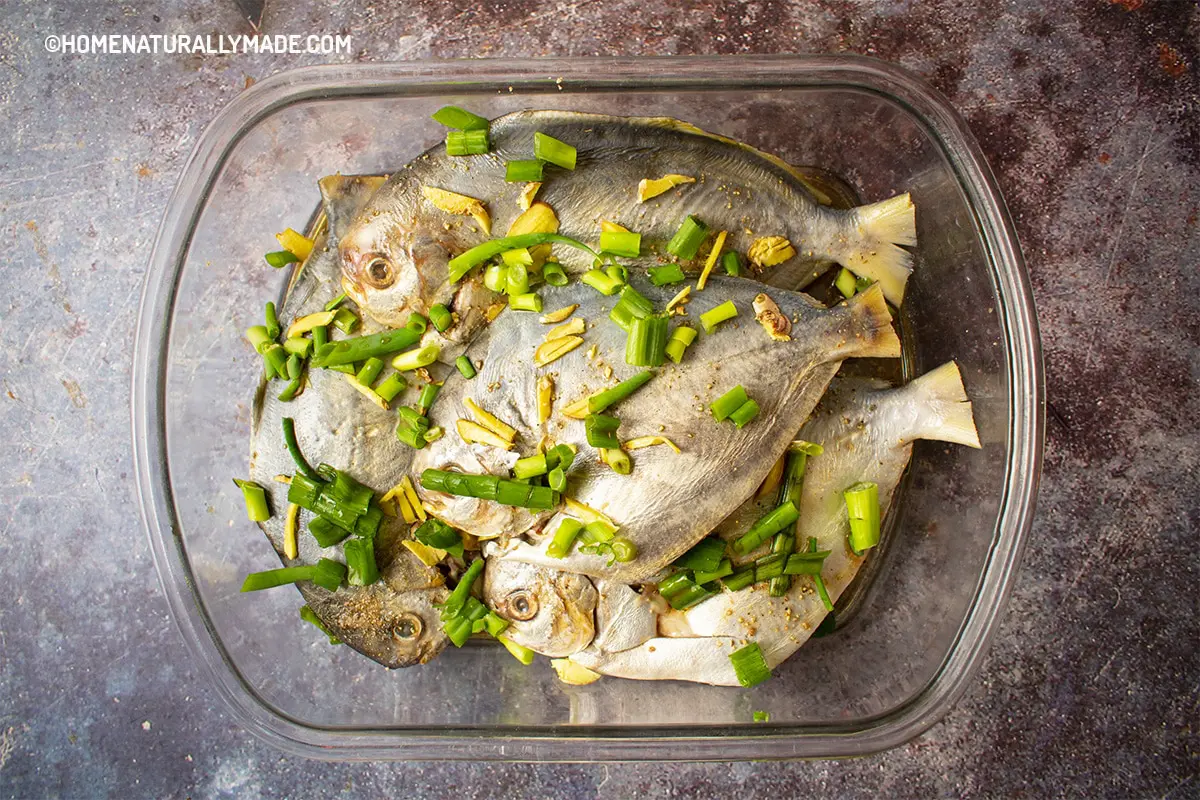
- After the water reaches a boil, turn off the heat, carefully add the steaming ware holding the seasoned fish to Wok. Turn the heat back to medium-high, cover with a lid, and steam for 13 minutes.
- Turn off the heat. Remove the fish from the wok and immediately spray 2 tsp olive oil over the fish evenly.
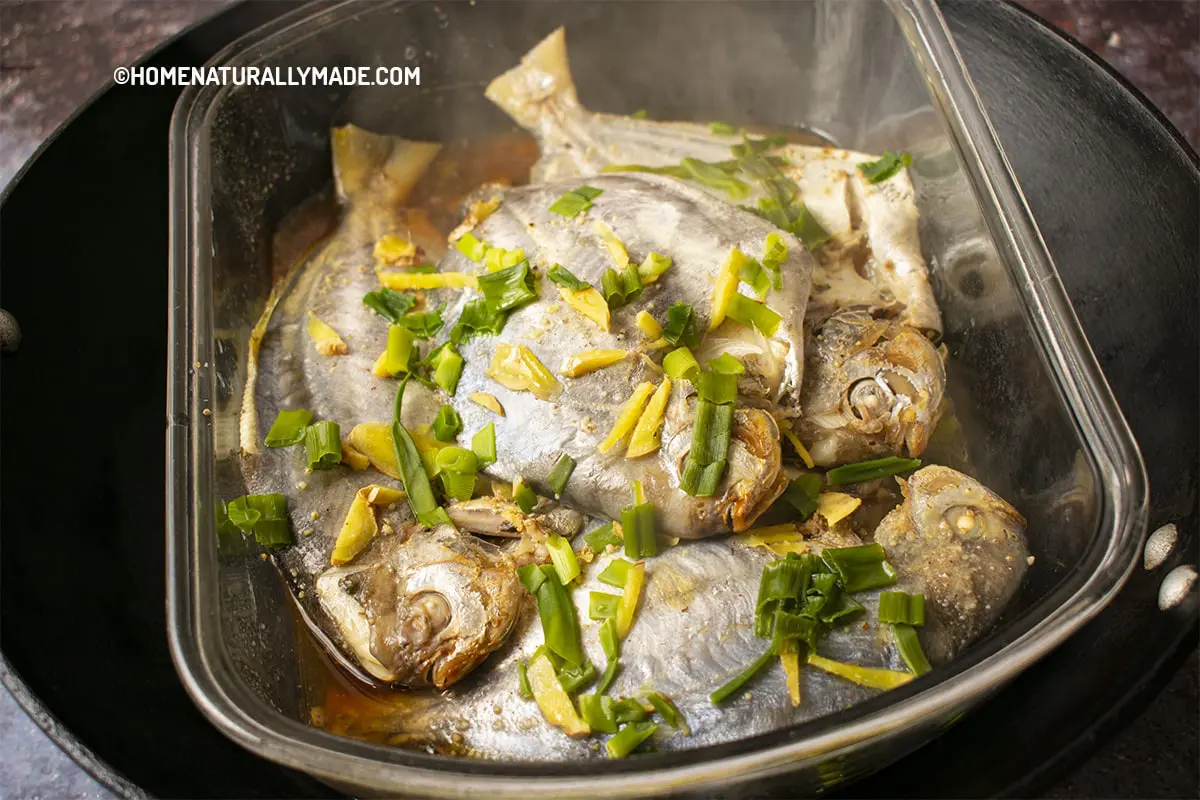
- All done! Enjoy a naturally delicious Huai Yang Style Steamed Fish.
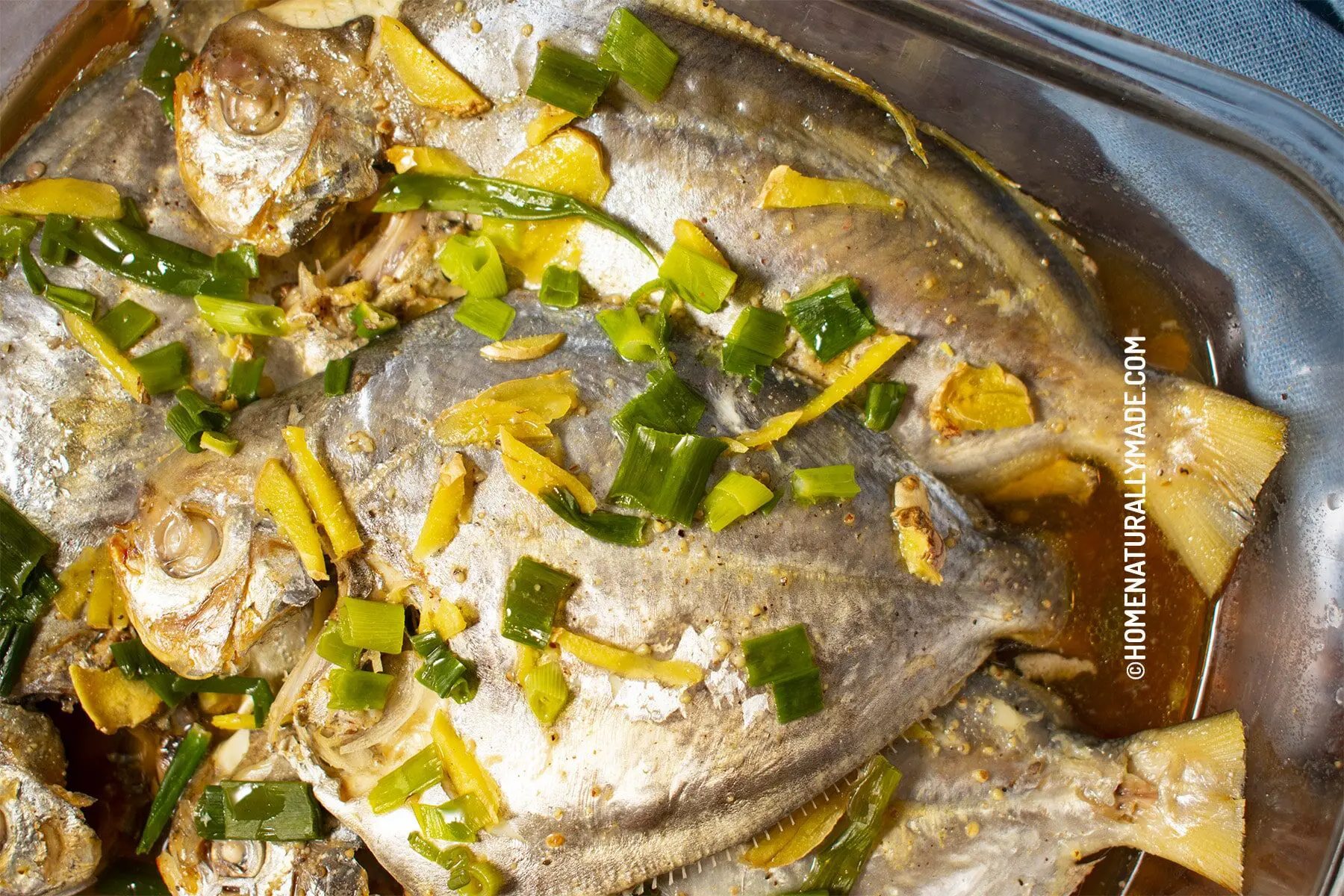
Notes
- Fish that has a white, tender and flaky meat are suitable for steamed fish. Butterfish, belt fish, bass, porgy are among the excellent choices.
- Sake has a clear, refreshing flavor and taste, perfect to work as a cooking wine for fish.
- A 14-inch Wok plus a 9x12 inch rectangular glass dish makes a great steaming set. The glass ware snug nicely on the inside wall of the wok without having to use a steaming rack.
- This recipe is for 1 lb fish, net weight after fully gutted & cleaned or fish fillet. You can multiply the ingredients portion based on the net weight of the fish you've making. For instance, if you get 1.5 lb cleaned & gutted butterfish, then use 1.5X every ingredient in the recipe, except for the water for steaming.
Recommended Products
As an Amazon Associate, I earn a small amount of commission from the qualifying purchases.
-
 New Star Foodservice 42917 Stainless Steel Measuring Spoons and Measuring Cups Combo, Set of 8
New Star Foodservice 42917 Stainless Steel Measuring Spoons and Measuring Cups Combo, Set of 8 -
 Kitchen Scale
Kitchen Scale -
 Light Soy Sauce
Light Soy Sauce -
 Gekkeikan Sake, 750 ml
Gekkeikan Sake, 750 ml -
 Organic Extra Virgin Olive Oil
Organic Extra Virgin Olive Oil -
 Organic Himalayan Pink Salt
Organic Himalayan Pink Salt -
 Wooden Pepper Mill
Wooden Pepper Mill -
 Soeos Whole Black Peppercorns 18OZ + Himalayan Salt 38oz + Grinders 2 Packs.
Soeos Whole Black Peppercorns 18OZ + Himalayan Salt 38oz + Grinders 2 Packs. -
 Glass Baking Dish
Glass Baking Dish -
 Premium Stainless Wok Lid for 14-inch Wok
Premium Stainless Wok Lid for 14-inch Wok -
 Cast Iron Wok with Flat Base 14 inch
Cast Iron Wok with Flat Base 14 inch
Nutrition Information
Yield 2 Serving Size 1Amount Per Serving Calories 792Total Fat 32gSaturated Fat 3gTrans Fat 0gUnsaturated Fat 6gCholesterol 334mgSodium 1723mgCarbohydrates 2gFiber 1gSugar 0gProtein 118g
Nutrition calculation is provided by Nutritionix to the best knowledge per ingredients description and isn't always accurate.
